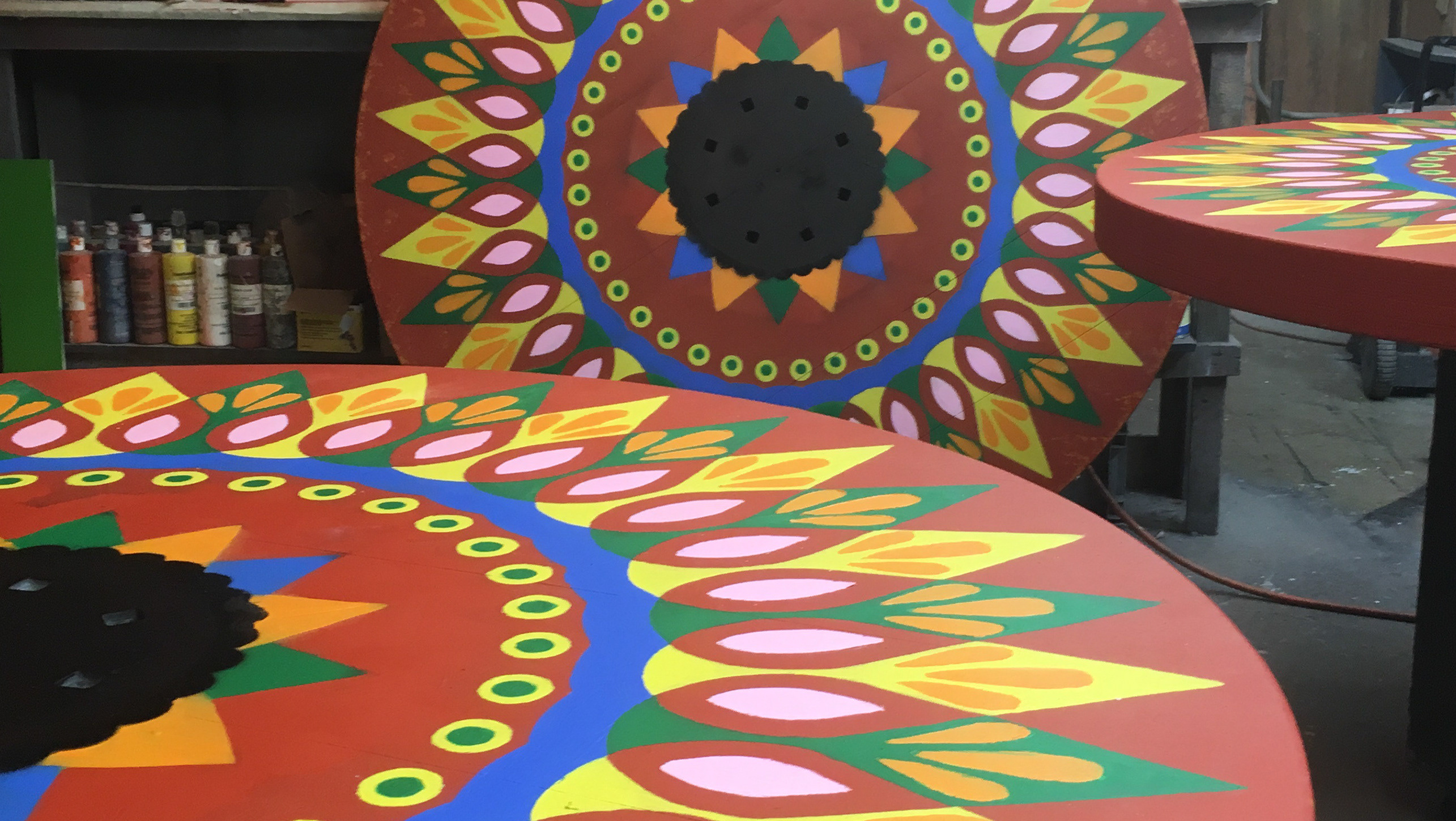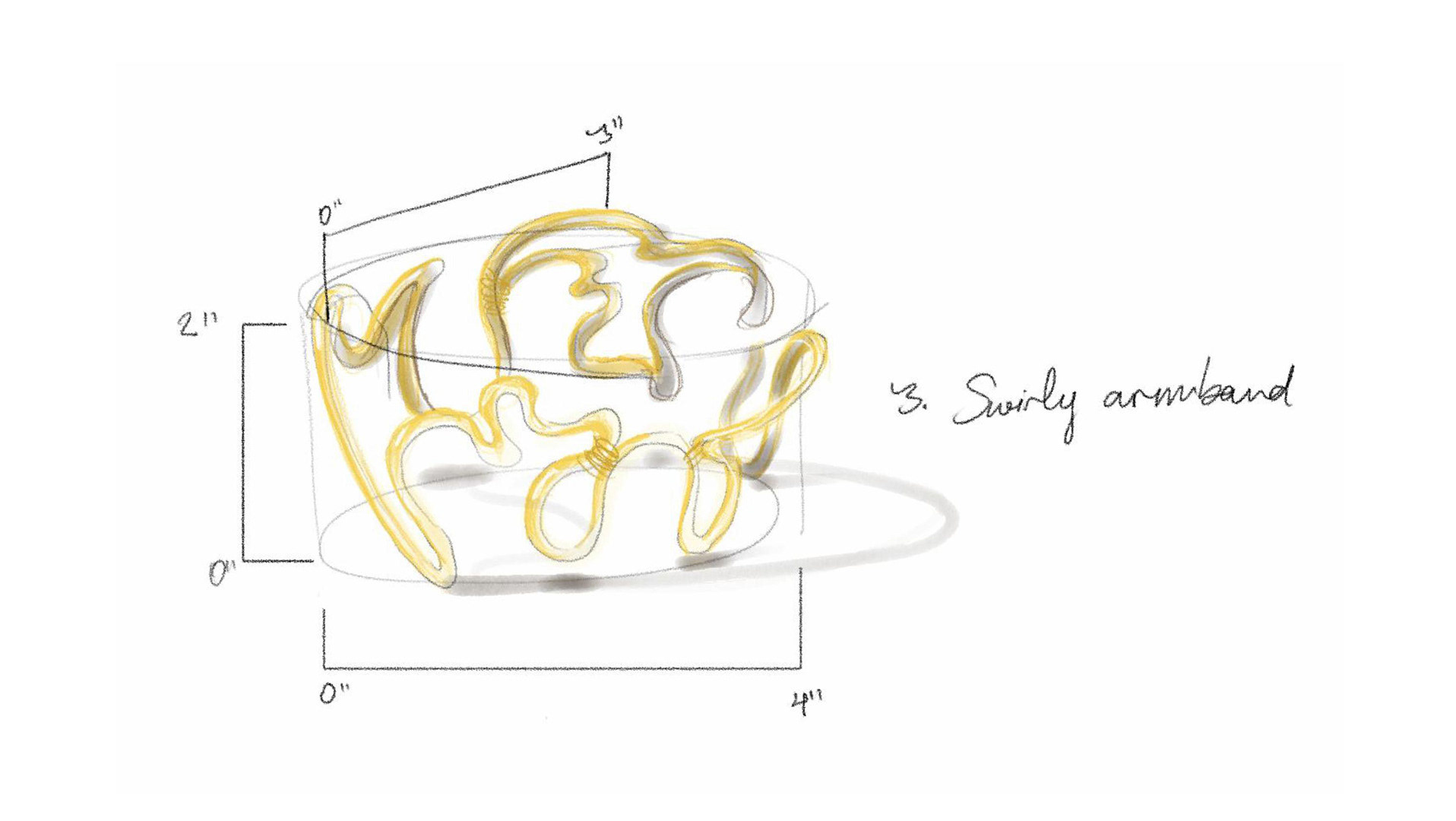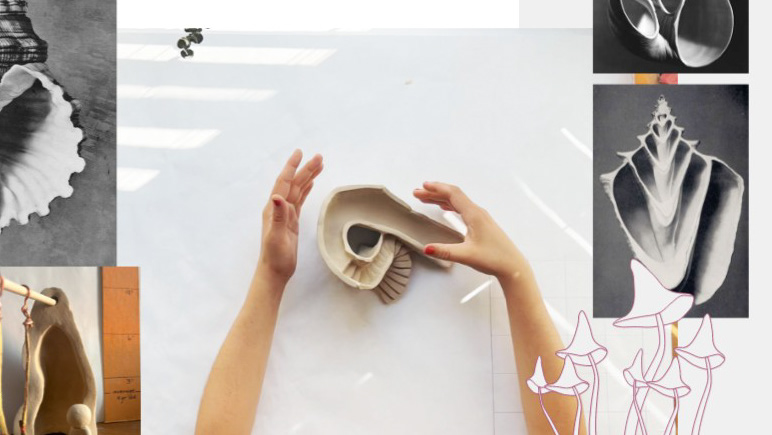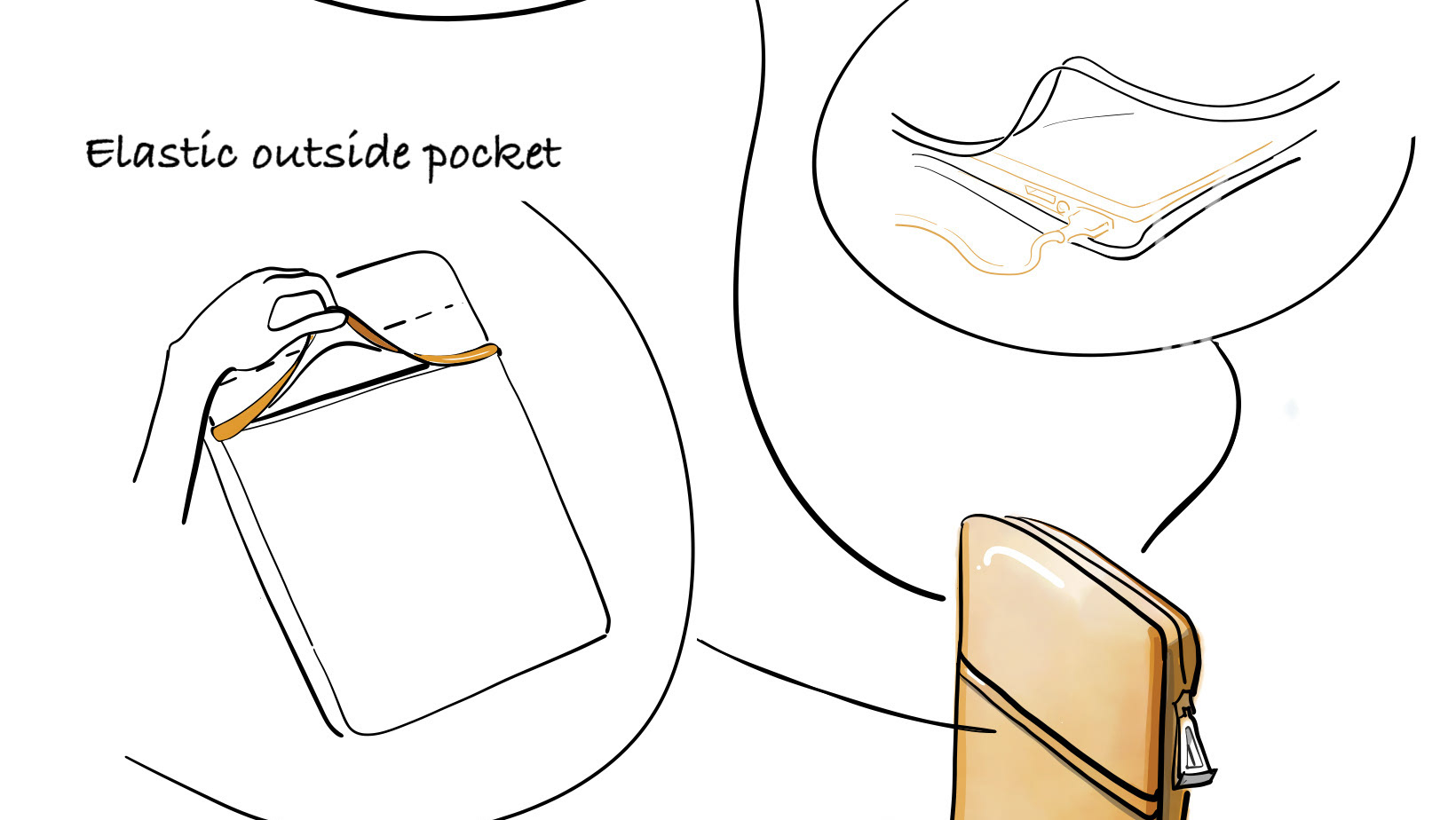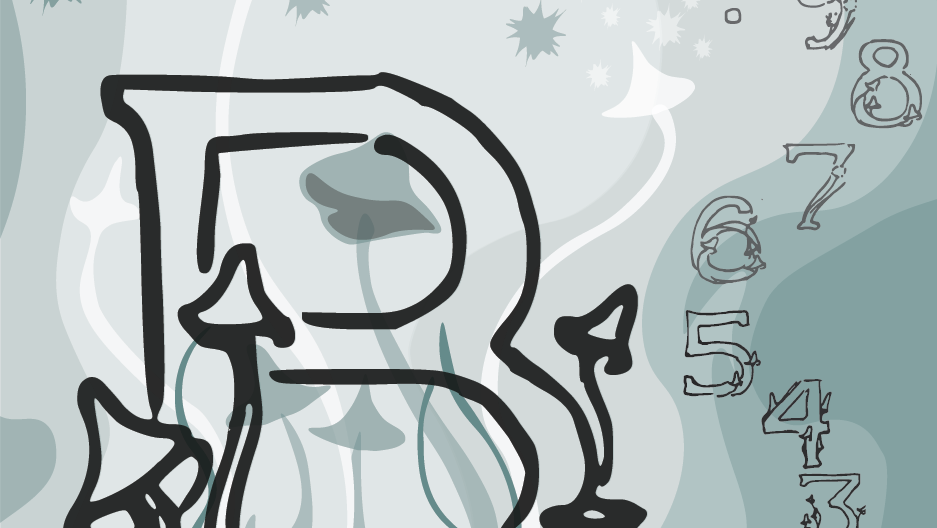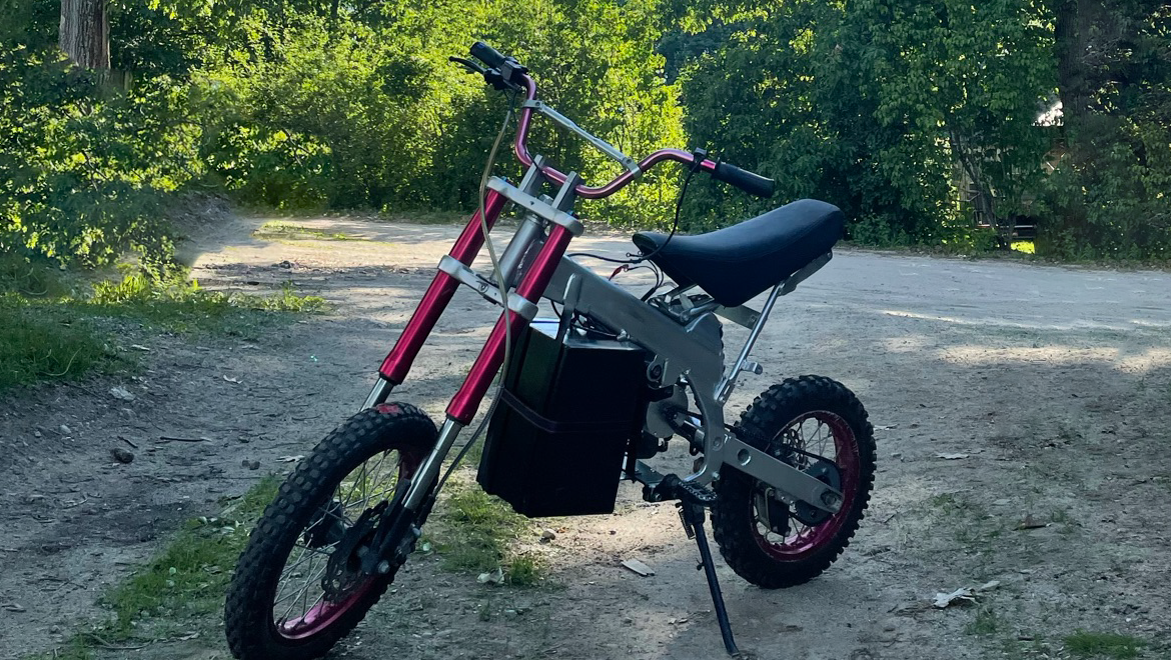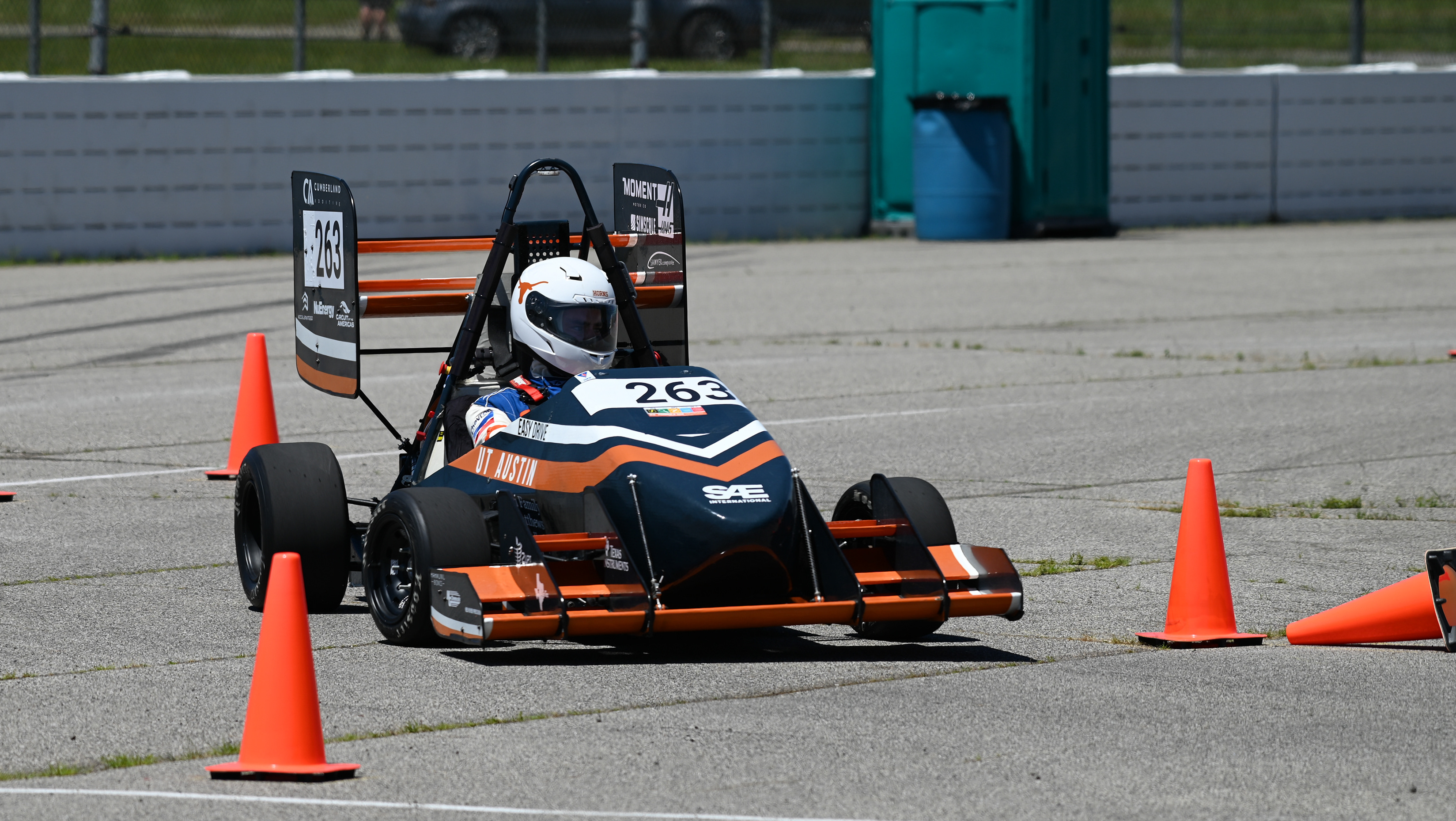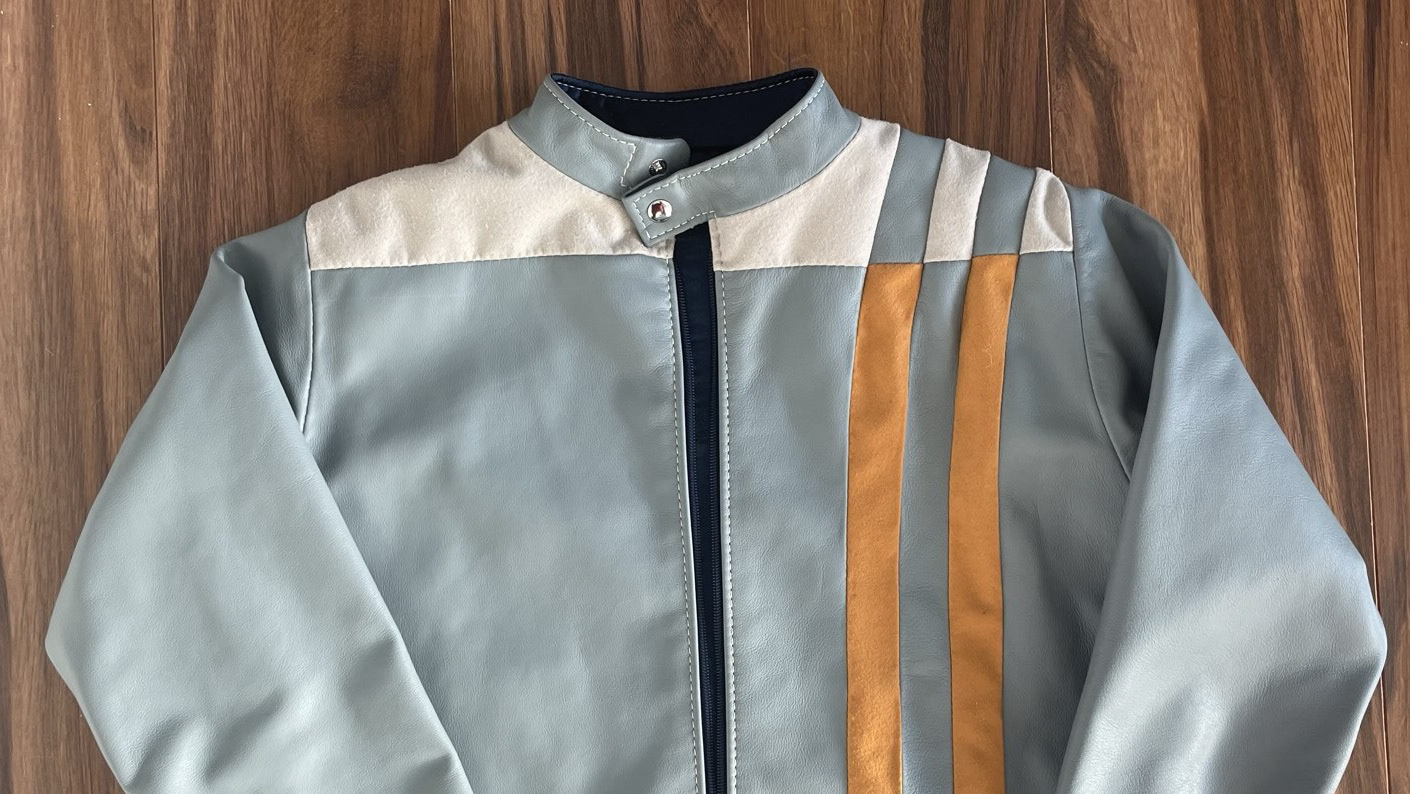F l o w e r P o w e r C a r
General Motors Warren Tech Center
E x p l o r a t i o n o f b e i n g a n d n a t u r e
As the culmination of my internship experience at General Motors, I was tasked with presenting my summer projects to the executive board and VP of design, Micheal Simcoe.
I felt this particular project was an incredible opportunity to create something that might inspire others who are driving the automotive industry to ask questions about our impact on the earth and our relationship with nature.
The greatest overarching challenge was capturing the conversations I had with others and the thought spirals I have experienced on my own with something tangible that would inspire others to think. With the presentation this summer and this portfolio project I wanted to show the process in its entirety with all its sticky twists and turns to eliminate any sense of finality or perfection. This was a project with no final product or deliverable, it is intended to be a conversation, one that is ongoing and one I hope continues for as long as we are here.
T h e C o n c e p t
M a t e r i a l
Early mornings started earlier with the snipping of wildflowers. I watched the sleeping bugs curled up in their leafy beds and the flowers with their petals folded close before sunrise.
Though their peace and fragrance brought my mornings to life, I felt the weight of the irony behind snipping them from their life source in order to capture their natural beauty.
M o l d - M a k i n g P r o c e s s
A two-part silicon mold of a C9 Corvette speed shape
![The first step in this process was making a two-part silicon mold. This negative of the speed form allowed me []](https://cdn.myportfolio.com/ca76bfbf-2a23-4cdc-a8f8-9cc7edde5c6e/ea6edf0f-ee6d-4f10-b554-91df70465340_rw_1920.jpg?h=7567c40052f2221ca04de795f2fa3b40)
The first step in this process was making a two-part silicon mold. This negative of the speed form allowed me []
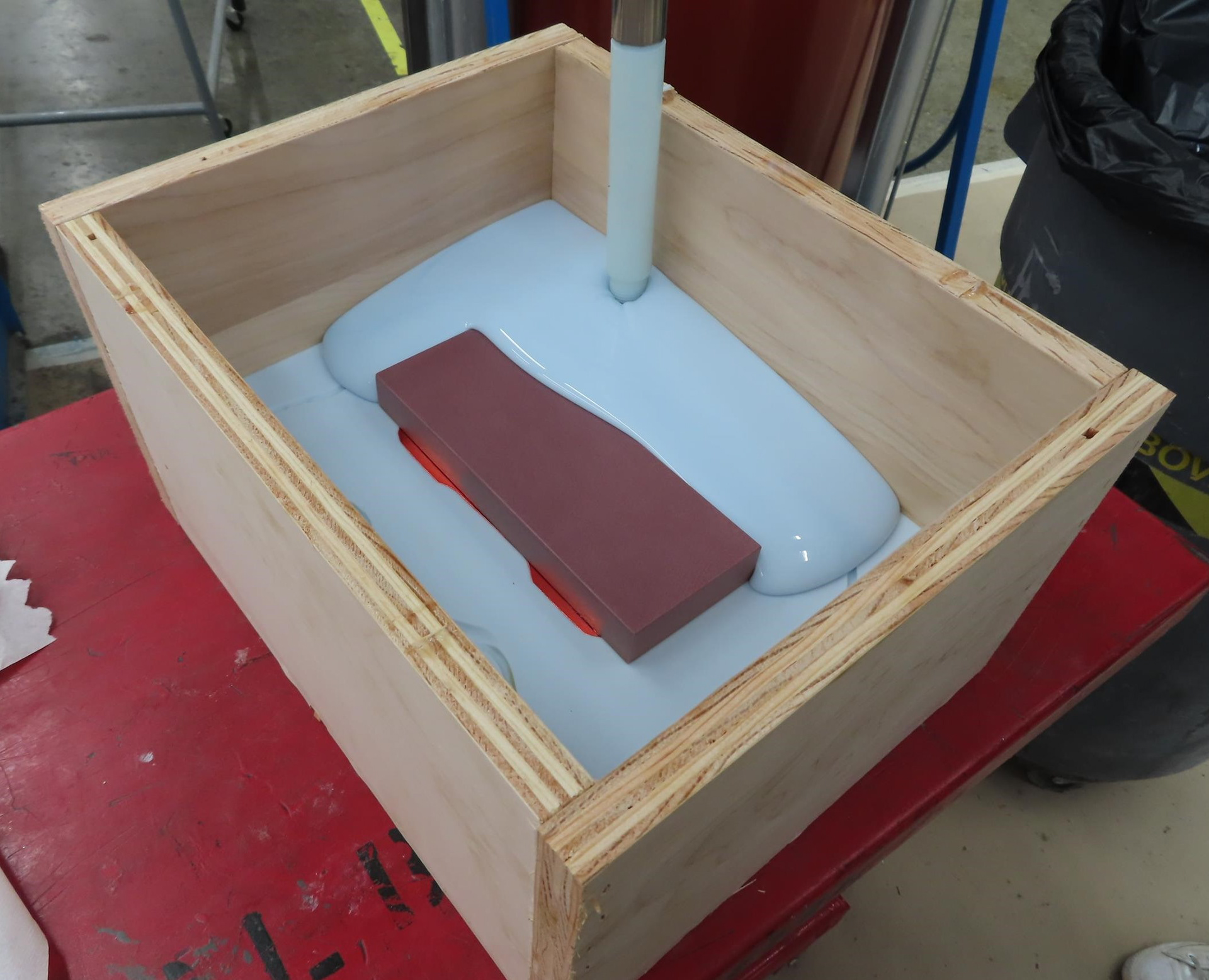
For the second half of the mold, I placed an MDF panel against the base of the upside down car. This would be used to hold the flowers in place during the curing process. For the first pour I used a panel of acrylic so I could see through it while I was arranging the flowers but for the remainder of the pours I used MDF so I could use the top half of the mold.
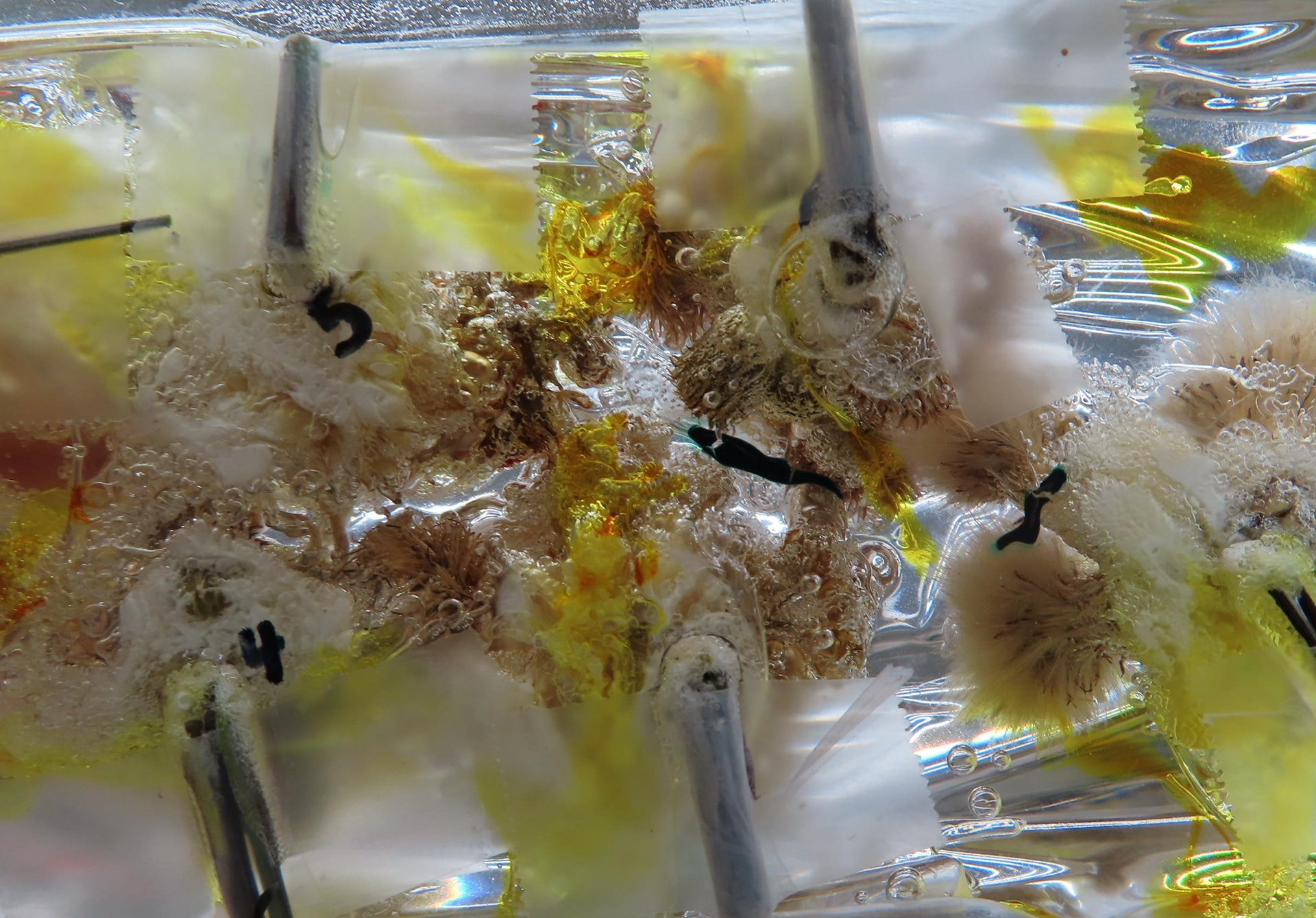
I gathered the wildflowers into small clusters and pulled their stems through holes I had drilled in a panel of acrylic. I taped their stems down to the back of the board and lowered the board into the epoxy-filled mold.
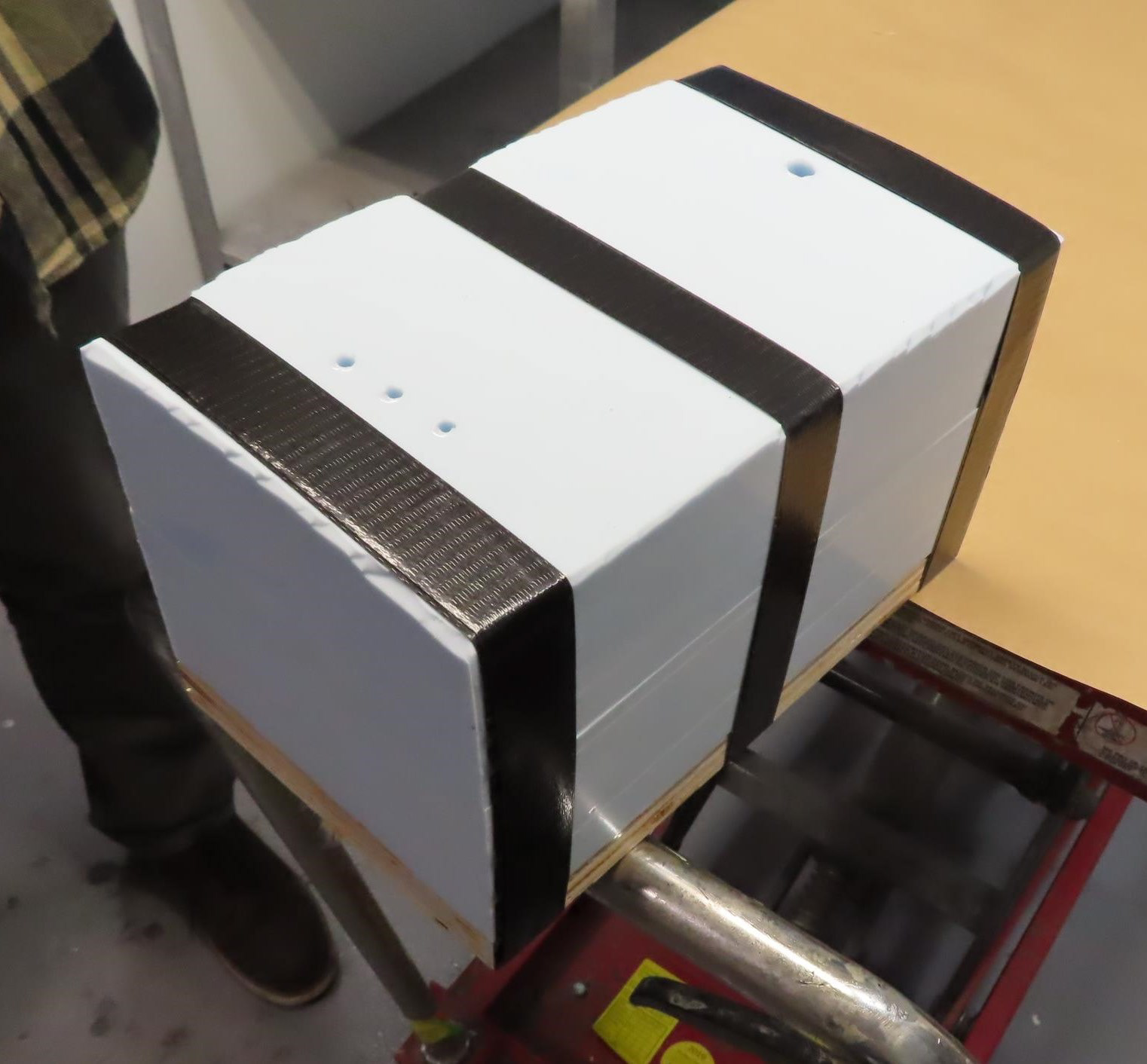
Once the two-part mold was fully taped, I placed it in the pressure pot overnight. Applying pressure squeezes any bubbles out to produce as clear an epoxy form as possible.
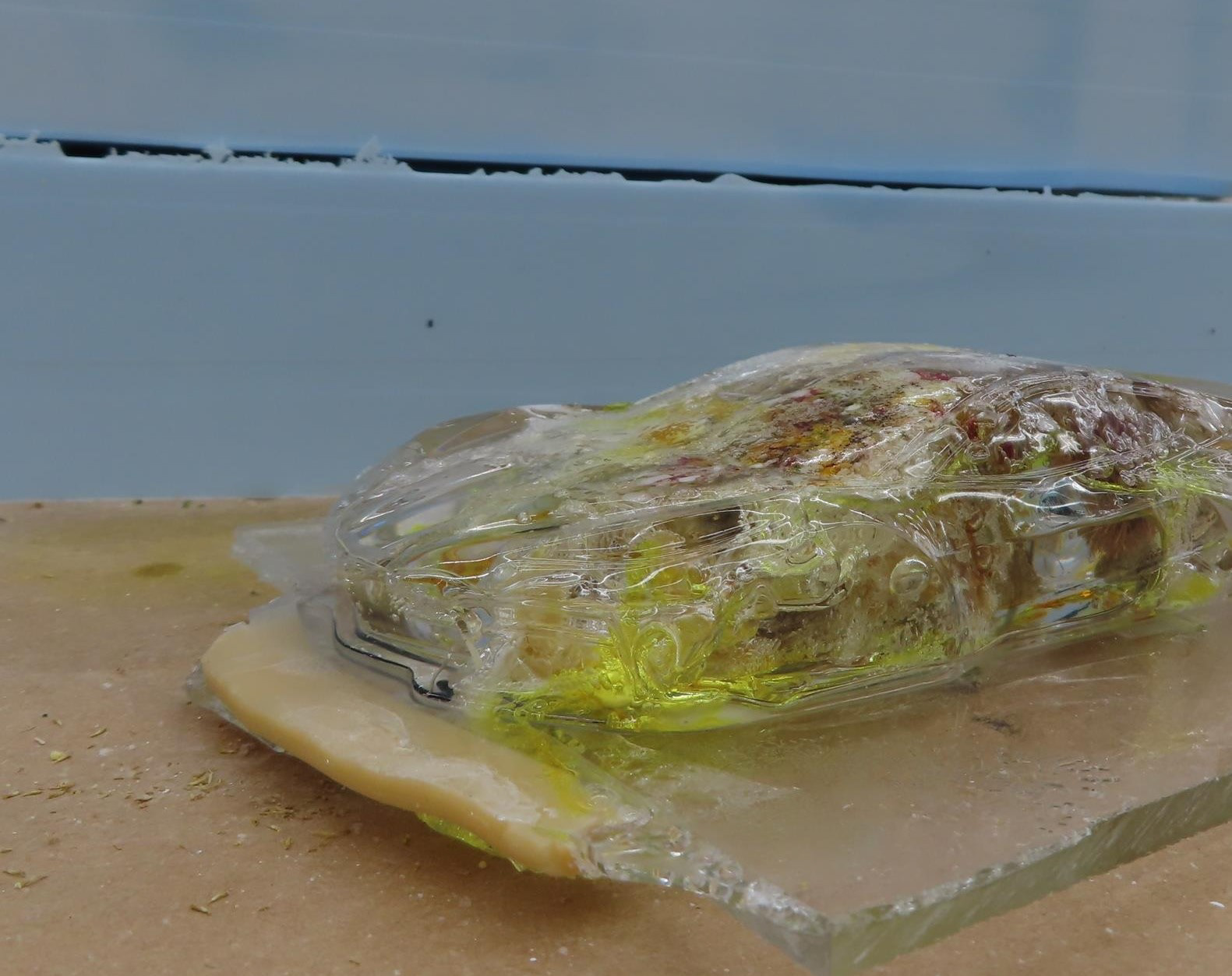
As the final step in the mold-making process, I removed the car from the mold, bandsawed the excess epoxy and acrylic panel off, and wet sanded the surface up to 2000 grit to give it a glossy finish.
V e r s i o n O n e
Experimentations
•the way the flower clusters were arranged
•dripping colored tint into the epoxy while it cured to create colorful mystical swirls
•Use of acrylic panel with drilled holes to mount the clusters of wildflowers so they would hang upside down into the mold while the epoxy cured
Findings
•Working with tints required the use of a material the shop used to pour lenses instead of a typical 2-part epoxy. This material reacted with the plants to create a beautiful but undesired explosion of bubbles and pulled the color from the petals and pollen out into the car
Pivots
•I chose to focus on capturing the plants in their purest truest form without tint
•I decided to focus on the appearance of the flowers in the epoxy so it was necessary to choose a different material for the car


V e r s i o n T w o
Experimentations
•Due to issues with the lens material, I decided to use a two-part epoxy that would more visibly capture the plants
Findings
•When a two-part epoxy is mixed with its hardener, an exothermic reaction occurs. This overheating had melted away portions of the part and fried the plants inside.
Pivots
•Experiment with different ways of filling the mold so that the part would not overheat
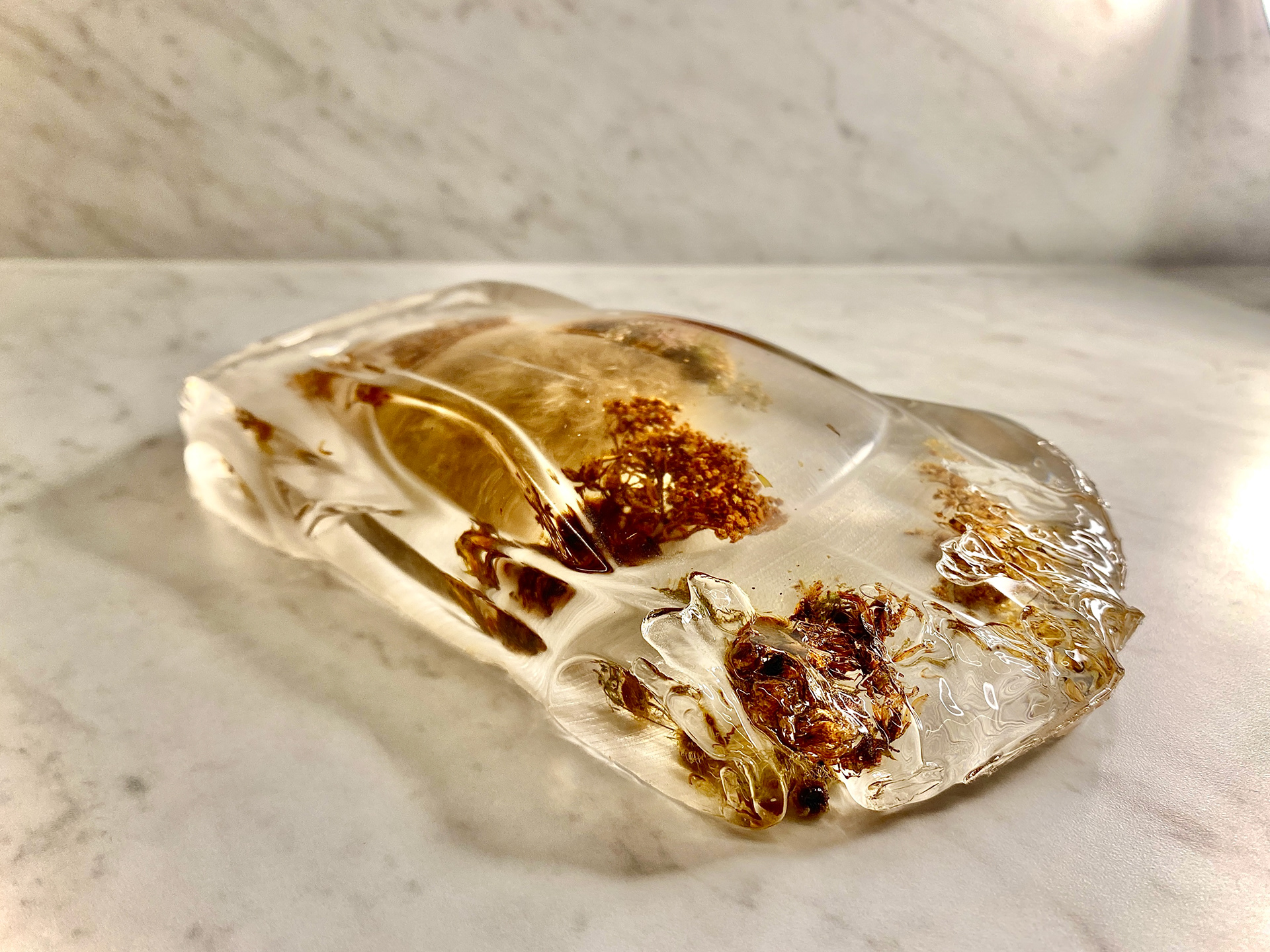
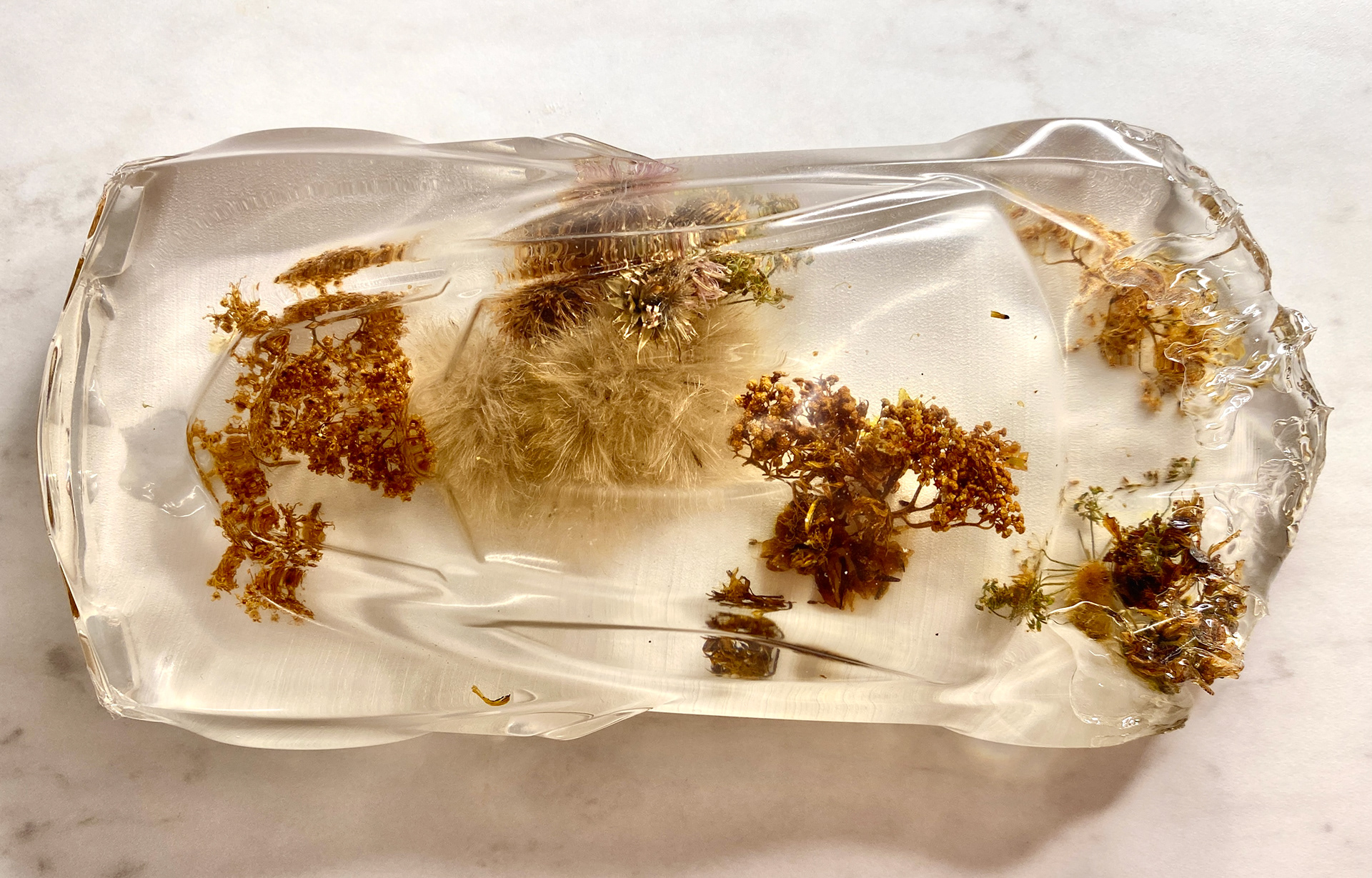
V e r s i o n T h r e e
Experimentations
•Offsetting the pours by roughly five hours would allow the first pour to reach its hottest point and begin to cool while the second pour was just heating up.
• different ways of prepping the flowers. One cluster I dried, another I dried and sprayed with a preserved, and the others I left untouched.



Findings
•The only visible indicator that this part was created in two pours was a thin line of bubbles a third of the way down, however, this thin line of bubbles would not be visible if the part had cured in the pressure pot
•After drying and spraying the flowers their yellows sharpened but purples browned
V e r s i o n F o u r
Experimentations
•Poured half of the epoxy then let it cure for 5 hours which is roughly when the epoxy is at its hottest. This resulted in half the second half of the car heating up while the first was already cooling down which minimized the total heat that went into the part at any given time
Findings
•The second pour for this part was poured after the first pour had cured. This resulted in epoxy seeping under and causing uneven surfacing.
Pivots
•Pour second half earlier, before the first layer of epoxy has solidified
V e r s i o n F i v e
Experimentation
After the final pour was pulled from the pressure pot, I removed the mold and wet-sanded it to a glossy finish. I then polished it after it was clear-coated. I cut a piece of wood from a Siberian Elm that once stood on the GM Design Center grounds for the base of my speed shape.
This particular piece of elm swallowed a bullet sometime ago leaving a little speck of human creation in its life layers. It created a subtle inverse relationship between the speed shape and its base.
Future Pivots
•After my presentation, an employee approached me about an idea he had regarding the project. We talked of ways this project could involve living plants
